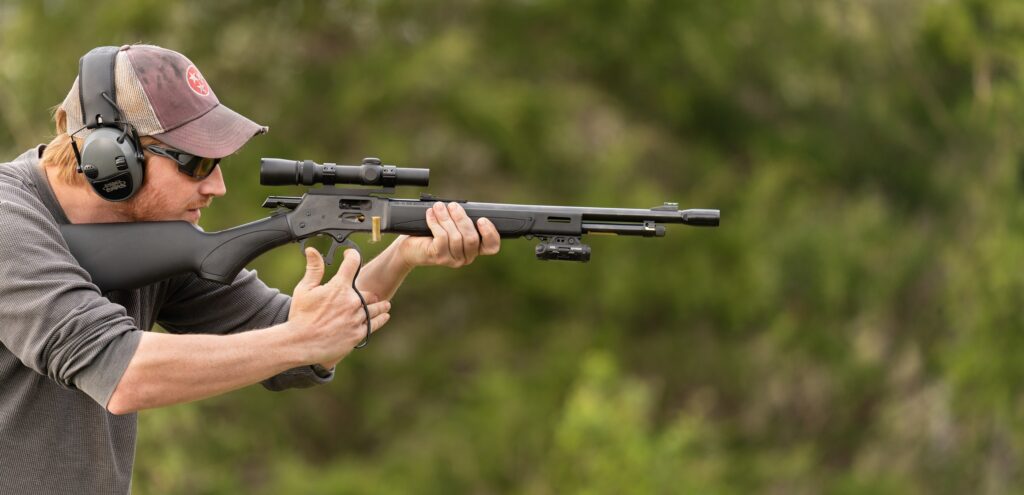
The first lever-action rifle designed by Benjamin Tyler Henry in 1860 was an advanced concept for the day. Its toggle action wasn’t a particularly strong design, and the original .44 rimfire cartridge was close to the maximum it would support. Granted, it was a pretty hefty round for a rimfire, with 200-grain lead bullets reaching 1,300 feet per second (fps) … but the plain Springfield rifled musket could toss a whopping 500-grain Minié ball bullet as fast. Serving the role later filled by submachine guns, the Henry lever-action rifle was nonetheless famous for its 14-shot capacity and the streamlined manual of arms compared to other repeaters of the period.

Winchester modified the Henry with side-gate loading and other minor improvements on the action until the 1880s, when toggle lock gave way to a much stronger wedge-locked breech. A massive, vertically sliding wedge articulated by the lever extension locks the bolt solidly into the receiver. With that improvement, 45-70 and stronger cartridges became available to lever-gunners. Since then, various makers have improved the materials and the manufacturing methods, but the design has stayed mostly the same. It took the revived Henry Repeating Arms to integrate all these incremental improvements into one modern lever action, the new Big Boy X .44 Magnum.
All Henry X series rifles—.44 Magnum, .45 Colt and .357 Magnum—weigh about the same at 7.3 pounds. Clad in all-black synthetic furniture, the Big Boy X rifle is very business-like. The receiver shows no pretty brass but has a weather-resistant black metal finish. Instead of the ladder sight optimistically graduated to 500 yards, the Henry Big Boy X uses a fixed fiber optic rear, coupled with an even brighter fiber optic front post. For long-range accuracy, the rifle arrives optic-ready. Sling swivels are integrated into the stock and the sport molded-in, along with the forend Picatinny rail. Two M-LOK slots on the sides provide barrel ventilation and extra mounting spots. In place of the usual brass buttplate, a rubber recoil pad tames the recoil. The barrel is factory-threaded 5/8×24 for a sound suppressor or a flash hider.
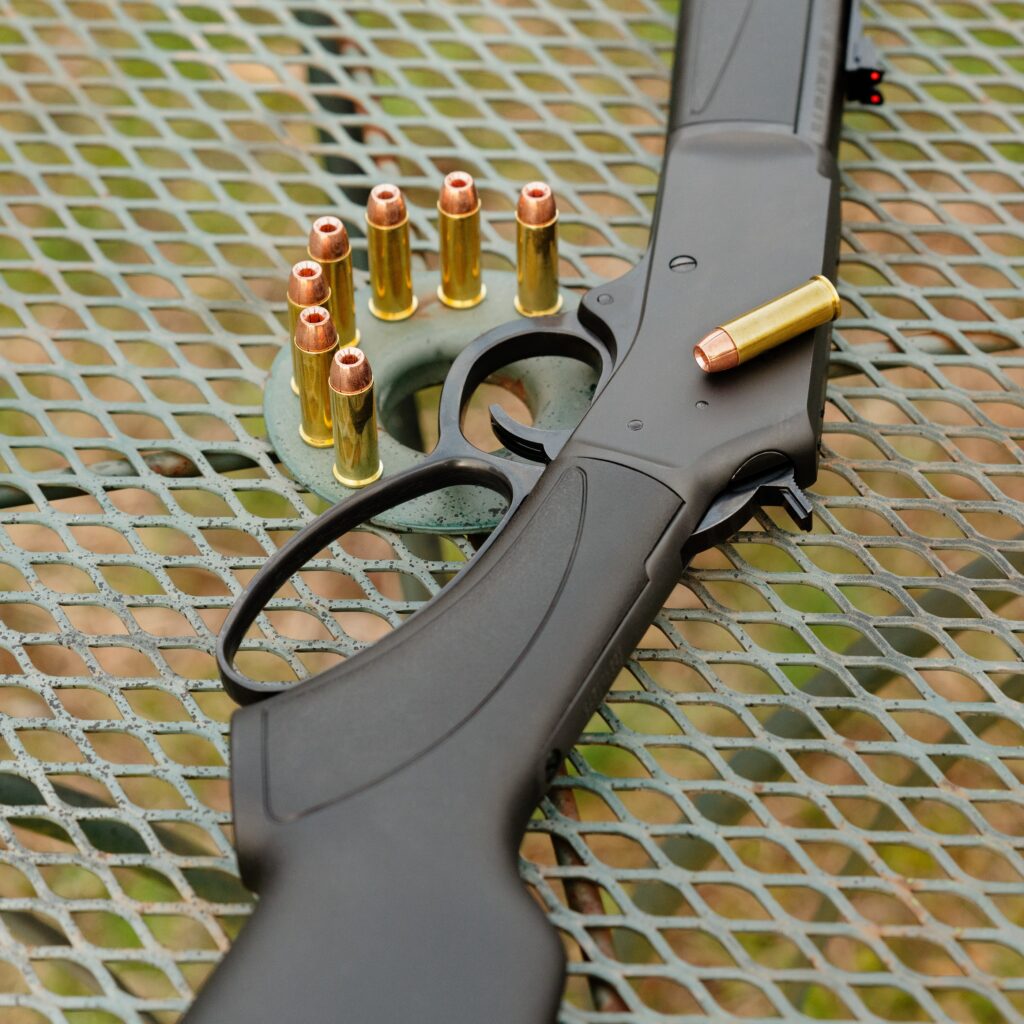
I own a very lightweight Bowers Group sound suppressor but am still waiting for the tax stamp. I shot the rifle suppressed with my SOT present: it’s a whole other experience, as the suppressor effectively diminishes both blast and felt recoil. With .44 Special ammunition, the report is hearing safe, and the rifle just barely moves on recoil. Depending on the brand, defensive .44 Special bullets still move at 1,100 to 1,350fps at the muzzle. Slower cowboy loads are the way to go for the ultimate quiet experience. The Bowers Group Vers 458 has enough volume to make the report hearing safe outdoors, where the supersonic shockwave doesn’t get reflected from nearby walls. I expected the large suppressor to make the rifle front-heavy, but it did not, being only 23 ounces. The suppressor obscures the open sights, but fiber-optic inserts make it possible to use the Bindon effect (using both eyes to shoot) and hit a human-sized target out to about 50 yards. Using a 1-3x20mm Weaver V-3 scope in a single-piece Talley mount raised the line of sight above the suppressor circumference. The rifle doesn’t heat up much, but the suppressor does after about 25 shots. Since the action doesn’t open until after the pressure drops, and the main locking lug is well away from the chamber, the internals stay clean. This robust mechanical advantage coupled with rimmed ammunition guarantee reliable extraction even after extensive use. The rifle has gone through nearly 1,000 rounds with not much fouling.
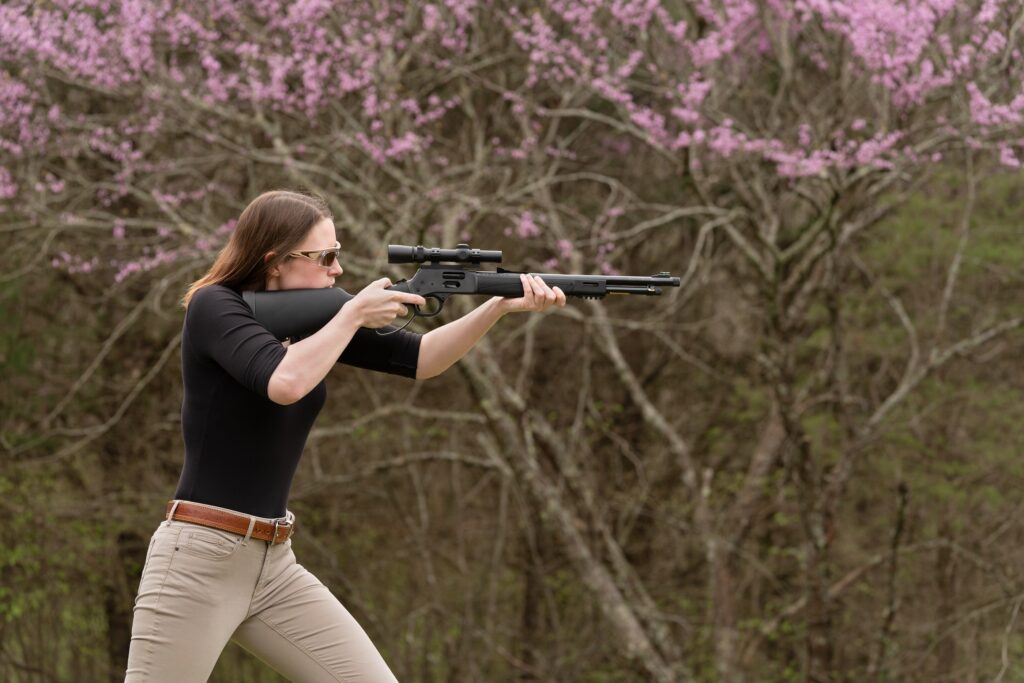
Henry X Series and Ammo
Unlike the older Henry models, Henry’s X series guns have side-loading gates in addition to the front-loading cutout. With the sound suppressor mounted, the side loading becomes the only viable method, as the can blocks the magazine follower removal. The magazine holds seven shots of either Magnum or Special ammunition; one round fits in the chamber with the hammer safely down. The .44 Magnum has triple the power of the old rimfire, extending the point-blank range significantly. My current configuration includes a Viridian® X5L light/laser combo for low-light engagements, and a Kaw Valley Precision linear compensator on the muzzle to channel the blast away from the user. Much smaller and lighter than the sound suppressor, the linear comp does a good job of managing the sound distribution, along with diminishing the visible muzzle flash.
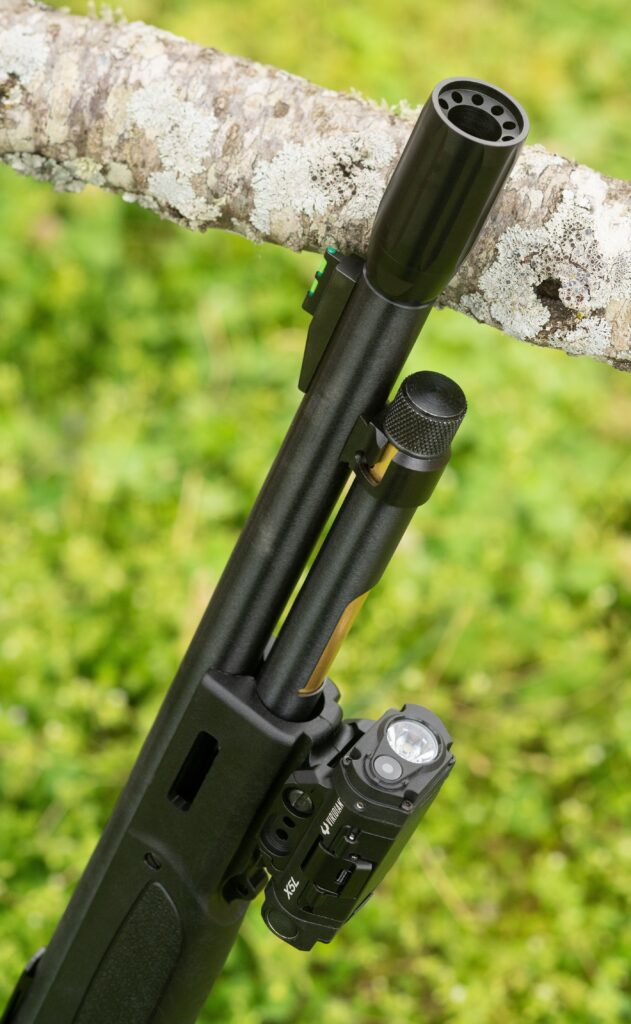
Like the .357 Magnum, the .44 Magnum’s performance improves with the 17.4-inch barrel compared to revolvers. Steinel Ammunition’s 225-grain deer load designed for handguns went from 1,200fps out of a 6-inch revolver to nearly 1,600fps. Hornady’s® FTX® of the same weight jumped from 1,400fps to 1,870fps! Federal Premium’s® Vital-Shok™ 280-grain JHP rated at 1,170fps and from the pistol flew at 1,450fps. Prvi Partizan 240-grain JSP is a hot load exceeding 1,540fps from a revolver; it reached 1,800fps from the rifle. My own handloads made with slow H110 powder and 240-grain Hornady XTP® and Sierra® JHC revolver bullets clocked 1,750fps. With Henry Big Boy X, the kick was minimal, even by my recoil-averse standard.
‘X’ Marks the Spot
Accuracy is the other reason for going with a rifle over a handgun. Even in my semi-expert hands, all loads shot inside of 2MOA. With 100-yard zero and the scope zoomed in all the way to 3 power, I can consistently hit a 3-inch spinner at 110 yards, the maximum distance available on my home range. With the scope set to 1x, rapid fire from 25 yards alternating between two steel silhouettes overlapped the lead splashes all on one spot. The drop stock lets the rifle point consistently, and the bolt travel is short enough for keeping the cheekweld between shots. In all but the brightest sunlight, the green laser adds an alternate aiming method inside of 100 yards. With the emitter below the barrel, the bullet hits high up to the zero distance (in my case 30 yards) and then drops below the point of aim. The bullet drop isn’t too drastic, so a body hit can be achieved with the laser illuminating the head up to 100 yards.
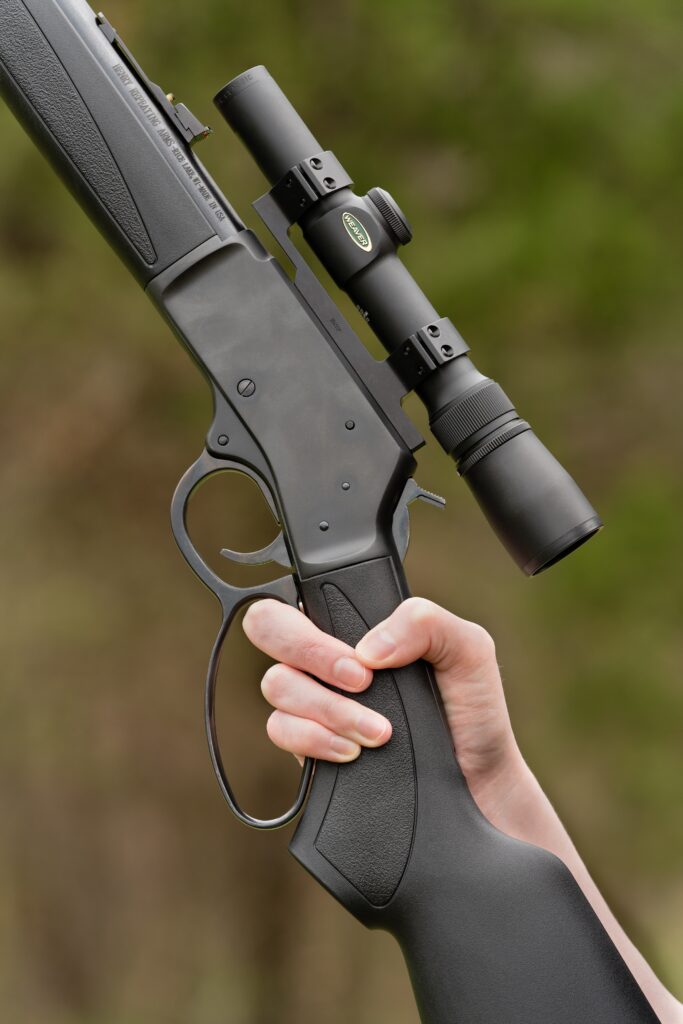
For leisurely range loading, pulling the magazine follower is convenient. The same is true of unloading the magazine without cycling each cartridge through the action. For combat use, the side gate is obviously quicker and avoids the risk of damaging the magazine tube. For single shots during gel testing, I just popped individual cartridges into the ejection port.
Gel test results were quite diverse. Some loads work equally well in revolvers and rifles, others do not. Federal Premium’s Vital-Shok, a hunting load using a 280-grain Swift™ A-frame® bullet, created a 0.65-inch wide hole that went from one gel block to the next for a total of 26 inches. The projectile stayed completely intact—just what you’d want for deer or boar. Federal’s .44 Special 200-grain, hollow-point, semi-wadcutter sounded like a sneeze and expanded to 0.57 inch with 16 inches of penetration: not impressive but adequate. Hornady FTX 225-grain with the red ballistic tip, though expressly designed for carbines, fragmented violently. The largest piece of about 60 grains just reached the 16-inch mark: It would work for self-defense but not for meat hunting. Steinel Ammunition’s 225-grain copper hollow point opened up and shed the petals. All six of the 14- to 15-grain petals were found 13 to 15 inches into the block, while the 140-grain cylindrical stem of the bullet punched through 32 inches of gel! My handloads using bullets optimized for handguns both fragmented violently, filling a 15-degree cone of gel with lead fragments out to 24 inches of depth—great for antipersonnel use, less than ideal for producing edible venison.
Henry Big Boy X .44 Magnum proved comfortable for use by experts and beginners alike. We’ve experienced no malfunctions, cycling was smooth, and the crisp 4-pound trigger benefitted good marksmanship. It’s an excellent, fast-handling weapon for field use by hunters, bear country hikers and recreational shooters. Years ago, I asked the gun designer Bernie White why a particular firearm was designed, and he responded: “It’s fun! You do get the concept, right?” This carbine illustrates the concept perfectly: It’s fun to shoot, it’s easy to shoot well, and all the practical utility is just the icing on the Magnum cake.
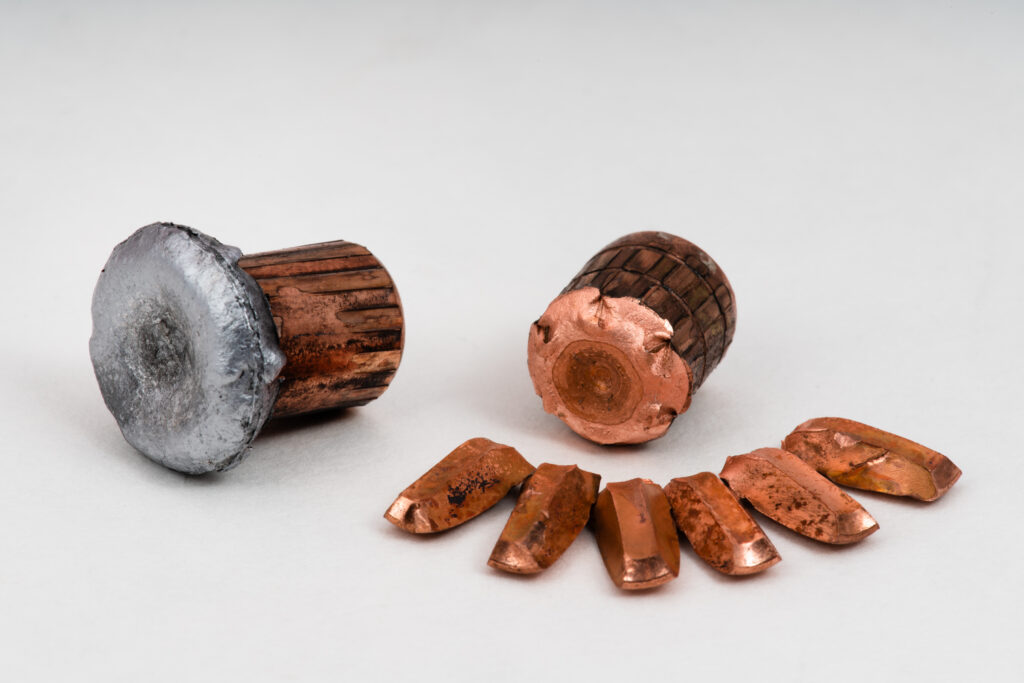
| This article first appeared in Small Arms Review V24N9 (November 2020) |












